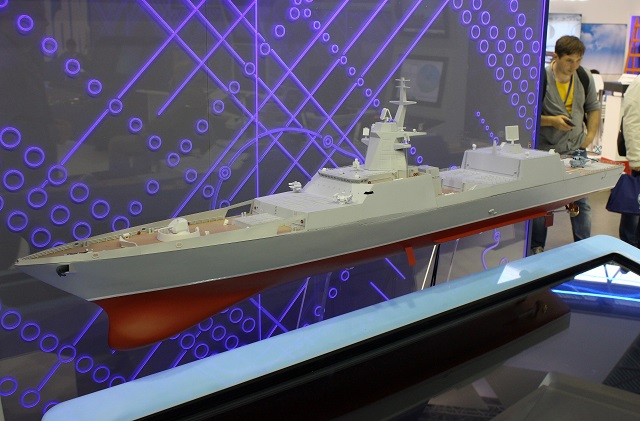The Russian Navy confirmed plans to build a key warship for the future of its fleet - a guided missile destroyer. The creation of the green-water warship has been discussed for long, but the project was permanently postponed. Expert Alexander Shishkin explains in the Vzglyad newspaper the problems with destroyer construction, which shipyards can build them and which weapons they would carry.

The suggested parameters of the new destroyer are cited below. They are close to the size of concept-project of the Krylov State Scientific Center. The 17500-ton displacement cited by the media is clearly exaggerated. The 14000 tons disclosed by Borisov properly fit into the general global trend to increase the displacement of the main green-water warships. The Zumwalt has a displacement of 16000 tons, the Chinese project 055 - close to 12000 tons, and Arleigh Burke-class most massively produced option III destroyer is close to 10000 tons.
It is already known that a nuclear power plant has been preferred to a gas turbine. It will make the Leader feel comfortable on solo voyages in peacetime and within aircraft-carrying and attack groups with new nuclear aircraft carriers and project 11442M cruisers.
One can judge about the armaments of the destroyer only by the Krylov concept-project. The advertising materials distributed at the Army-2017 forum, the Leader will carry close to 200 vertical launcher cells for various missiles (128 air defense and 64-72 cruise, antiship and antisubmarine guided missiles), 130mm artillery gun (which can have bigger 152mm caliber) and two helicopters.
As for the new deadline of the destroyer creation, there is information the technical design (main project stage to confirm and detail blueprint solutions) will begin after 2020 and the construction of the lead ship in 2025. To accelerate the Russian Navy renewal it would be desirable to simultaneously launch the construction of two warships at Severnaya verf and two at Zvezda.
 Scale model of an improved Project 22350 frigate on display during IMDS 2017. Note the increased number of VLS cells, just in front of the bridge and in front of the helicopter hangar. It also features the new generation integrated mast of the same family as the one fitted aboard the new Project 20385 corvette. Picture by Curious via Forums.airbase.ru.
Scale model of an improved Project 22350 frigate on display during IMDS 2017. Note the increased number of VLS cells, just in front of the bridge and in front of the helicopter hangar. It also features the new generation integrated mast of the same family as the one fitted aboard the new Project 20385 corvette. Picture by Curious via Forums.airbase.ru.
As for batch production of project 23560 destroyers, it was initially planned to build 12 warships (six for the Northern and six for Pacific fleet). The number was then cut to eight (four plus four). It should be remembered that the number of serial destroyers depends on the aircraft carrier principle. There should be two aircraft-carrying groups on permanent combat duty (one of the Northern and the other of the Pacific fleet) to display force in any part of the World Ocean.
There should be not be less than two destroyers in a group provided there are four frigates of project 22350M. Four destroyers on combat duty mean there should be a total of 12 (four ready to replace them and four in overhaul). Otherwise there can be no constant presence.
The Leader with its displacement of a cruiser and a major missile stock cannot be classified as a destroyer. But navymen are loyal to the traditions. The Navy headquarters might have decided to reserve the cruiser class for bigger warships which can sooner or later replace the Petr Veliky and the Admiral Nakhimov heavy nuclear missile cruisers of project 11442M, expert Alexander Shishkin writes in the Vzglyad newspaper.
© Copyright 2018 TASS. All rights reserved. This material may not be published, broadcast, rewritten or redistributed.










